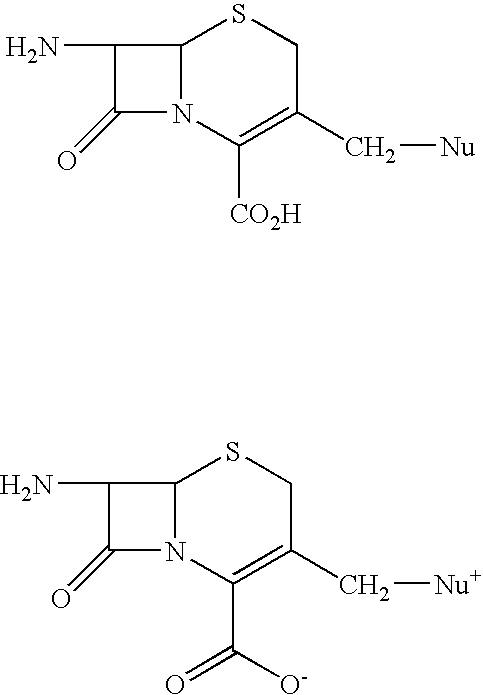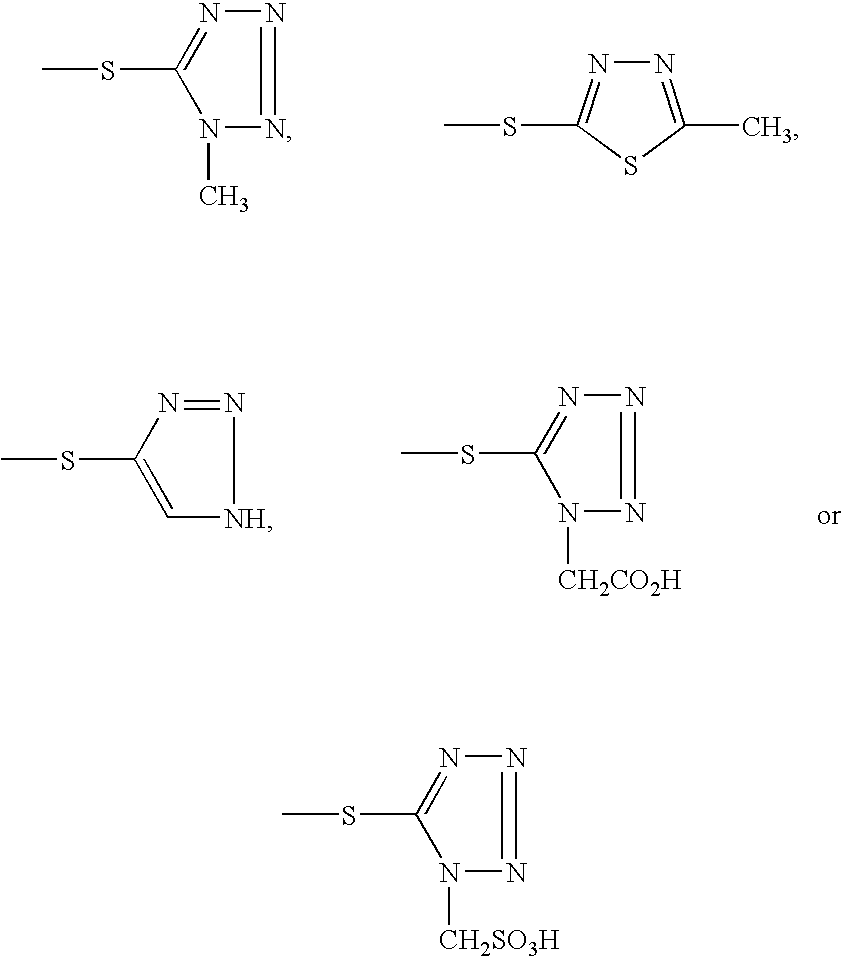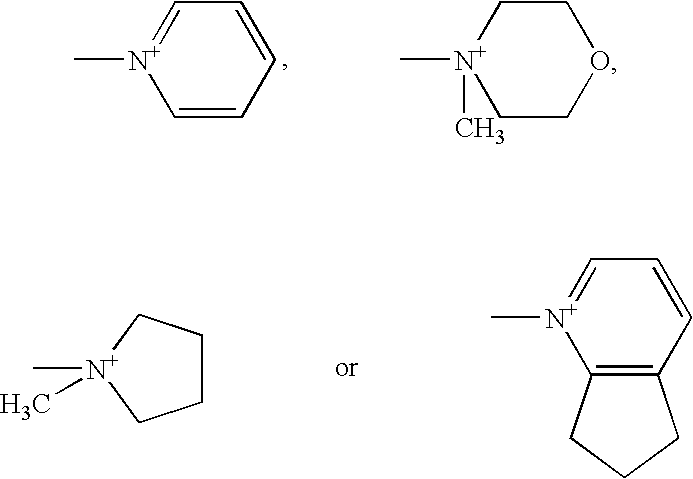Process for preparing pure cephalosporine intermediates
a technology of cephalosporine and intermediates, which is applied in the field of process for preparing pure cephalosporine intermediates, can solve the problems of high cost, environmental hazardous freon chlorofluorocarbon, and high cost, and achieves less cost, less cost, and commercially viable novel process
- Summary
- Abstract
- Description
- Claims
- Application Information
AI Technical Summary
Problems solved by technology
Method used
Image
Examples
example 1
[0039] 7-Aminocephalosporanic acid (7-ACA) (200 gm) is stirred in cyclohexane (1400 ml) for 10 minutes at 25° C. and then acetamide (400 mg), imidazole (400 mg) and hexamethyldisilazane (142 gm) are added to the reaction mass at 25° C. The reaction mass is slowly heated to reflux temperature and stirred for 2 hours at the reflux to form a clear solution. The reaction mass is distilled to collect about 100 ml cyclohexane and then the mass is cooled to 5° C. to give the reaction mass containing (6R,7R)-3-[(Acetyloxy)methyl]-7-trimethylsilyl) aminoceph-3-em-4-oic acid.
[0040] Trimethylsilyl iodide (246 gm) is slowly added to the mixture of N-methylpyrrolidine (94 gm) and cyclohexane (700 ml) at 5-10° C. over a period of 30 minutes. Then reaction mass is stirred for 30 minutes at 5-10° C. To this mass is added to the reaction mass containing (6R, 7R)-3-[(acetyloxy)methyl]-7-(trimethylsilyl)aminoceph-3-em-4-oic acid over a period of 30 minutes at 5-10° C. and then trimethylsilyl iodide s...
example 2
[0042] [6R-(6α,7βˆ-i-tˆ-Aminoˆ-carboxy-δ-oxo-S-thia-i-azabicyclo [4.2.0]oct-2-en-S-yl]methyl]-1-methylpyrrolidinium inner salt hydrochloride (25 gm obtained as in example I) is added to a mixture of water (200 ml) and acetone (375 ml) at 5° C. and stirred for 10 minutes and syn-2-(2-aminothiazol-4-yl)-2-methoxyimino acetic acid 2-benzothiazolyl thioester (MAEM) (34.10 gm) is added at 5-10° C. Triethylamine is slowly added to the reaction mixture at 5-10° C. to adjust the pH to 7.5-7.7 and stirred for 10 minutes at 5-10° C. The temperature of the reaction mass is then slowly raised to 20- 25° C. and maintained for 4 hours 30 minutes. Ethyl acetate (250 ml) is added to the reaction mass at 5° C., stirred for 15 minutes and the layers are separated. Then the aqueous layer is extracted with ethyl acetate (125 ml) at 5-10° C. The aqueous layer is subjected to carbon treatment and filtered on hyflo-bed. 10 N HCl (60 ml) and acetone (400 ml) are added to the filtrate at 5-10° C., seeded wi...
example 3
Stage-I:
(6R, 7R)-Trimethylsilyl 7-(trimethylsilyl)amino-3-acetoxymethylceph-3-em-4-carboxylate:
[0043] 7-Amino cephalosporanic acid (30 gm) is suspended in cyclohexane (210 ml) at 25° C., then hexamethyidisilazane (27.84 ml), acetamide (60 mg) and imidazole (60 mg) are added at 25° C. and the reaction mass is heated to reflux for 3 hours. Then the solution obtained is cooled to 25° C. to give the title compound in cyclohexane.
Stage H:
(6R, 7R)-Trimethylsilyl 7-(trdmethylsilyl)amino-3-iodomethylceph-3-em-4-carboxylate:
[0044] The solution of (6R, 7R)-Trimethylsilyl 7-(trdmethylsilyl)amino-3-acetoxy methylceph-3-em4-carboxylate in cyclohexane obtained in stage-I is cooled to 0-5° C., the solution of trimethylsilyl iodide (48 gm) in cyclohexane (55 ml) is slowly added over a period of 30 minutes and stirred for 1 hour at 0-5° C. to give the title compound solution in cyclohexane.
Stage-III:
(6R, 7R)-Trimethylsilyl 7-(trimethylsilyl)amino-3-(1-methyl-1-pyrrolidinio)methyl ceph-3...
PUM
| Property | Measurement | Unit |
|---|---|---|
| temperature | aaaaa | aaaaa |
| temperature | aaaaa | aaaaa |
| temperature | aaaaa | aaaaa |
Abstract
Description
Claims
Application Information
 Login to View More
Login to View More - R&D
- Intellectual Property
- Life Sciences
- Materials
- Tech Scout
- Unparalleled Data Quality
- Higher Quality Content
- 60% Fewer Hallucinations
Browse by: Latest US Patents, China's latest patents, Technical Efficacy Thesaurus, Application Domain, Technology Topic, Popular Technical Reports.
© 2025 PatSnap. All rights reserved.Legal|Privacy policy|Modern Slavery Act Transparency Statement|Sitemap|About US| Contact US: help@patsnap.com



